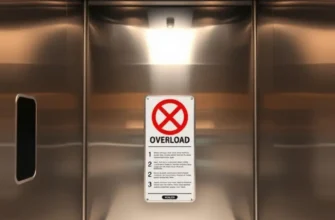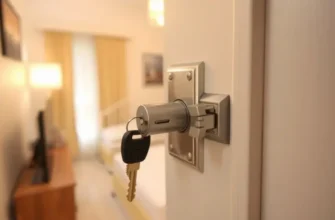Renting an apartment can be an exhilarating chapter in life, filled with new experiences and opportunities for independence. However, it can also come with challenges, especially when it comes to unexpected incidents that may damage your belongings or personal space. Renters insurance is your safety net, ensuring you’re covered when the unforeseen occurs. Navigating the claims process might seem daunting, but understanding each step can provide clarity and peace of mind. From documenting your belongings to submitting your claim, knowing the ins and outs will facilitate a smoother experience. It’s essential to prioritize safety and security in your living environment, and mastering the claims process is part of that commitment. Here, we’ll break down the renters insurance claims process into manageable steps, ensuring that securing your losses is as seamless as possible.
Preparing for the Unexpected: Documenting Your Belongings

An unexpected incident affecting your rented space can be distressing, but having a comprehensive inventory of your belongings can make the insurance claims process clearer and more effective. Start by making a detailed list. Itemize everything of value in your rental, starting with high-dollar items like electronics and appliances, and moving on to clothes and furnishings. Don’t forget specific items like jewelry or collectibles.
Creating an organized inventory list can be simplified using spreadsheet software or even dedicated inventory management apps. Keep entries simple but detailed—include each item’s make, model, purchase date, and approximate value. For inherited or gifted items, estimating a probable market value will suffice.
Visual documentation is equally crucial. Use a camera or smartphone to take clear, well-lit photos of each item. For easy reference, store these images with corresponding entries in your inventory file. When photographing, capture multiple angles. This provides evidence of the item’s condition and helps substantiate claims. For valuable items, particularly electronics, take photos of serial numbers. Another strategic approach involves video documentation. Walk through your apartment recording a video, narrating each item’s details. Videos offer a comprehensive overview and ensure nothing is overlooked.
Storing your inventory records securely is as important as creating them. Consider using cloud storage solutions. They enable you to access your documentation anytime, even if your devices are lost or damaged in an incident. Additionally, keep a physical copy accessible yet stored safely.
Periodic updates to your inventory are vital. Anytime you acquire or dispose of a significant item, update your records. This ensures that your records remain current, a fact that simplifies the claims process should the need arise. Routine checks, perhaps bi-annually, will protect your investments.
Understanding your renters insurance policy is fundamental. Some items might be subject to specific coverage limits or exclusions. By comprehending these details, you can ensure your documentation efforts align with policy requirements, avoiding future headaches. If needed, adjust your insurance policy to cover high-value items or particular categories at risk of underinsurance.
For further advice on safeguarding your possessions from various threats, consider exploring emergency lighting solutions for renters. Being prepared for outages and moments of crisis adds an extra layer of security to your documented efforts.
Careful documentation of your belongings prepares you for unforeseen events, streamlining the renters insurance claims process. By proactively managing your possessions, you’ll navigate claims with greater ease and confidence.
The Claims Process: Step-by-Step Guide to Filing

Experiencing an unexpected event, such as theft or damage, can be stressful and overwhelming. However, understanding how to effectively file a renters insurance claim can significantly ease the process. Knowledge of the components involved and gathering the appropriate information early will make the journey smoother and more efficient.
Document the Damage or Loss
The first crucial step in filing a claim is to document the damage or loss thoroughly. Take clear, detailed photographs of all affected areas or items. Note the condition of each item, and if possible, gather any pre-existing documentation you have, such as receipts or photos from before the incident. This documentation is essential for building a strong claim.
Review Your Policy
Before reaching out to your insurer, revisit your renters insurance policy. Understand your coverage limits and any specifics regarding filing claims. This knowledge prepares you for discussions with your insurance company and helps manage expectations regarding the potential outcome of your claim.
Initiate Contact with Your Insurer
Once you have a clear understanding of your policy, contact your insurance provider promptly. Many insurers have a time limit within which claims must be filed after an event. Generally, your insurer will guide you on the next steps, including necessary documents or forms required to formalize your claim. Always note the date and details of your communications for future reference.
Provide Comprehensive Information
Your insurance provider will ask for specific details related to the incident and your policy. Be prepared to submit the evidence and documentation you compiled earlier. Reference any damaged items with evidence of ownership and the estimated cost of replacement or repair. This level of thoroughness helps accelerate the processing of your claim.
Work with the Claims Adjuster
In many cases, an insurance adjuster will be assigned to evaluate the damages. Cooperate fully with them and provide all additional information as requested. They might schedule a visit to assess the situation in person. Being present during their assessment can be beneficial in providing insights or additional context that supports your claim.
Understand Resolution Outcomes
Once the adjuster has submitted their report, the insurance company will process your claim. You will receive a settlement offer that outlines the compensation you’re eligible for. Compare the offer with your coverage details, and if anything seems amiss, discuss it with your insurer.
Negotiation Tips
If you feel the settlement does not fully cover your losses, know that you can negotiate. Prepare additional documentation or arguments supporting why a higher settlement is justified. Clear, factual communications often lead to a better outcome.
Maintain Communication
It’s crucial to maintain open, proactive communication with your insurer throughout this process. If you face any delays or issues, timely follow-ups can prevent miscommunication and expedite resolution.
For more detailed guidance on rights and responsibilities when it comes to rental agreements and insurance, you might find valuable insights in this comprehensive guide.
Filing a renters insurance claim doesn’t have to be a daunting experience. By following these structured steps and keeping your communication clear and factual, you can navigate this process with increased confidence and clarity.
Final words
Understanding the renters insurance claims process empowers you to handle incidents with confidence and ease. Taking the time to prepare your belongings and knowing how to file a claim will alleviate stress during a challenging time. Remember, being proactive about safety and security in your rented space is not only about having insurance—it’s about ensuring peace of mind in every aspect of your life as a renter. Should the unexpected occur, you’ll be ready to navigate the process seamlessly, allowing you to focus on restoring your comfortable living environment.









